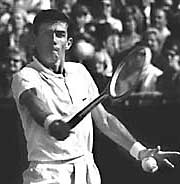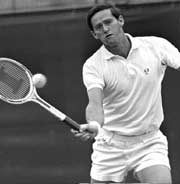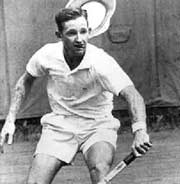|
TennisOne Features
Hall of Fame's Big Tent By Joel Drucker
A recent weekend at the International Tennis Hall of Fame showcased my joyful ambivalence to tennis' history. For starters, let us take the quaint town of Newport, Rhode Island where the Hall of Fame is located. In the category of New England seaside towns, Newport is as precious as it gets, at once charming and, alas, expensive, complete with the history of social exclusion that I've always found a vexing part of tennis' make-up. For at heart my tennis persona belongs much more to the scattershot inclusion of a public park than the selective entry of a club. But then again, the Hall of Fame itself is one of my favorite places in all of tennis. Its location on the grounds of the Newport Casino – the quintessential personification of the down-home elitism you see at many old-line tennis clubs – has a charming intimacy, right down to its pebbly walkways and enchanting grasscourts. And the museum, for any kind of tennis lover, is a paradise of photos, videos, equipment and more.
Every July, just after Wimbledon, the Hall of Fame holds an ATP event and inducts a new crop of greats. This year featured three notables: Steffi Graf, Stefan Edberg and longstanding age-group star, Dorothy “Dodo” Cheney. But that was only part of what made this an extraordinary weekend. This year marked the Hall of Fame's 50 th anniversary. All 68 living inductees were invited to attend a special series of festivities. Fifty showed up for an oncourt parade and series of events. The attendees ranged from Sidney Wood, at 92 the oldest living Wimbledon champion, to more recent stars such as Chris Evert and John McEnroe.
Sitting in the lobby of the Hotel Viking, located three blocks from the Hall of Fame, you could encounter one decade after another of tennis history. Here came Pancho Segura, the great Ecuadorian with the incredible two-handed forehand. Then entered Jack Kramer, a man whose achievements on and off the court make him arguably the most important person in tennis history. A few minutes later, Rosie Casals, one of the pioneers of the women's pro tour. And here was Guillermo Vilas, clad in a black suit and looking as hip as he did during his glory years in the ‘70s. On and on it went. But the group I most enjoyed watching in Newport was the Australians, who in the aggregate of course earned that classic reunion award, Person Who Traveled Furthest. To me, the Aussies have always been to tennis what the French are to wine-making: the heart and soul -- exemplary practitioners of the craft, committed not just to excellence, but also, quite rare for tennis, community.
What do I mean by community? Let's contrast the great Australians with their American counterparts. Don't get me wrong: Americans are worthy of their honors too. But without mentioning names, I'll note that the grand Americans tend to stand apart from others as rather solitary champions, isolated by tennis' inability to capture the national imagination. The American player knows that tennis is a strange little sport in this country, and that sense of illegitimacy forces them to treat their tennis life ambivalently, to project themselves as something more than a tennis player. American tennis greats are often at once athletes who've become MBAs. Not so in Australia, where tennis is as legitimate as any other sport and where sport itself pervades the bloodstream of the national culture even more than in America. Newport teemed with the Aussies who'd ruled the sport from 1950 to ‘75, from Frank Sedgman to Mal Anderson, from Roy Emerson to John Newcombe, from Fred Stolle to Tony Roche and, of course, Rod Laver and Roy Emerson. No matter how old these Australians get, there is still a child-like charm to them, ranging from their jokes about competition to their extensive use of nicknames, from “Fiery” (Stolle) to “Rocket” (Laver), to “Country” (Anderson) and so on. In the history of tennis, no other nation has logged more miles – and in the process, brought the entire sport under one big tent. Leave it to the Aussies to turn a club into a park. Good on ya', mates.
Your comments are welcome. Let us know what you think about Joel Drucker's article by emailing us here at TennisOne . |

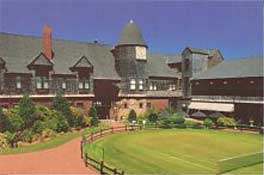
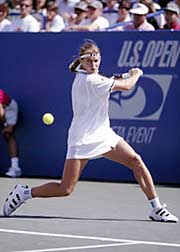
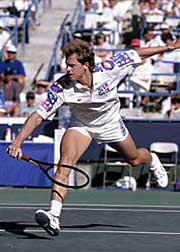
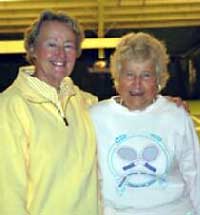
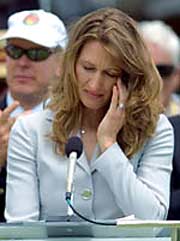 An emotional Steffi Graf during her acceptance speech.
An emotional Steffi Graf during her acceptance speech. 